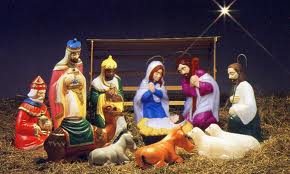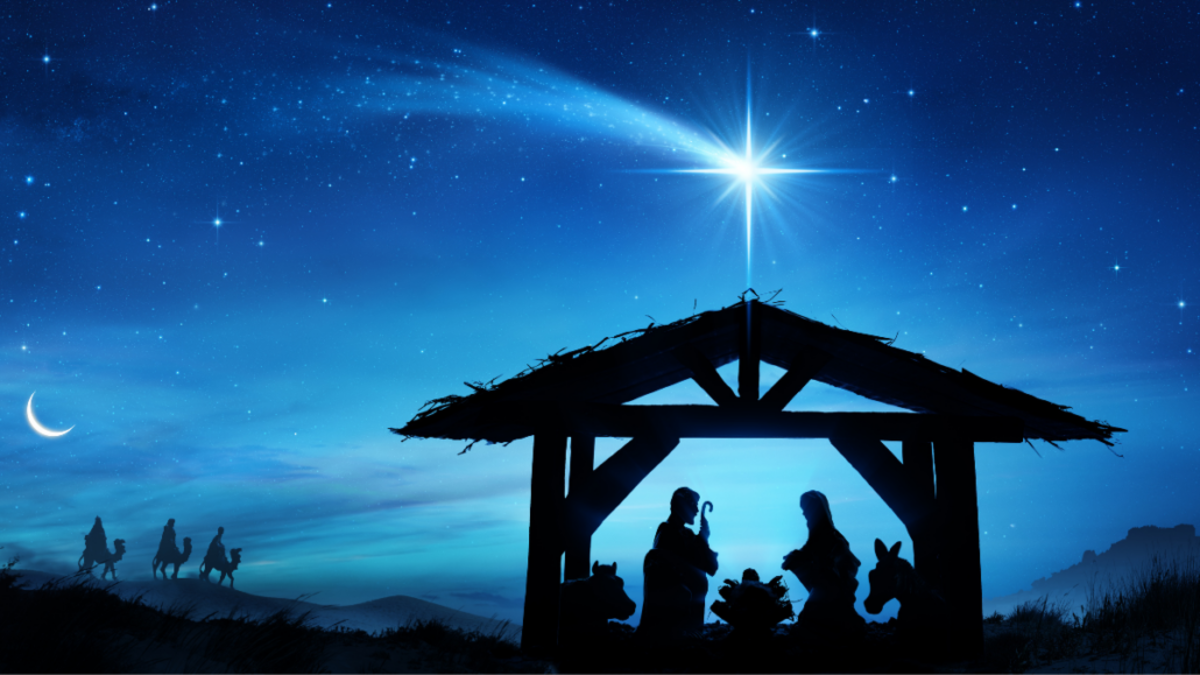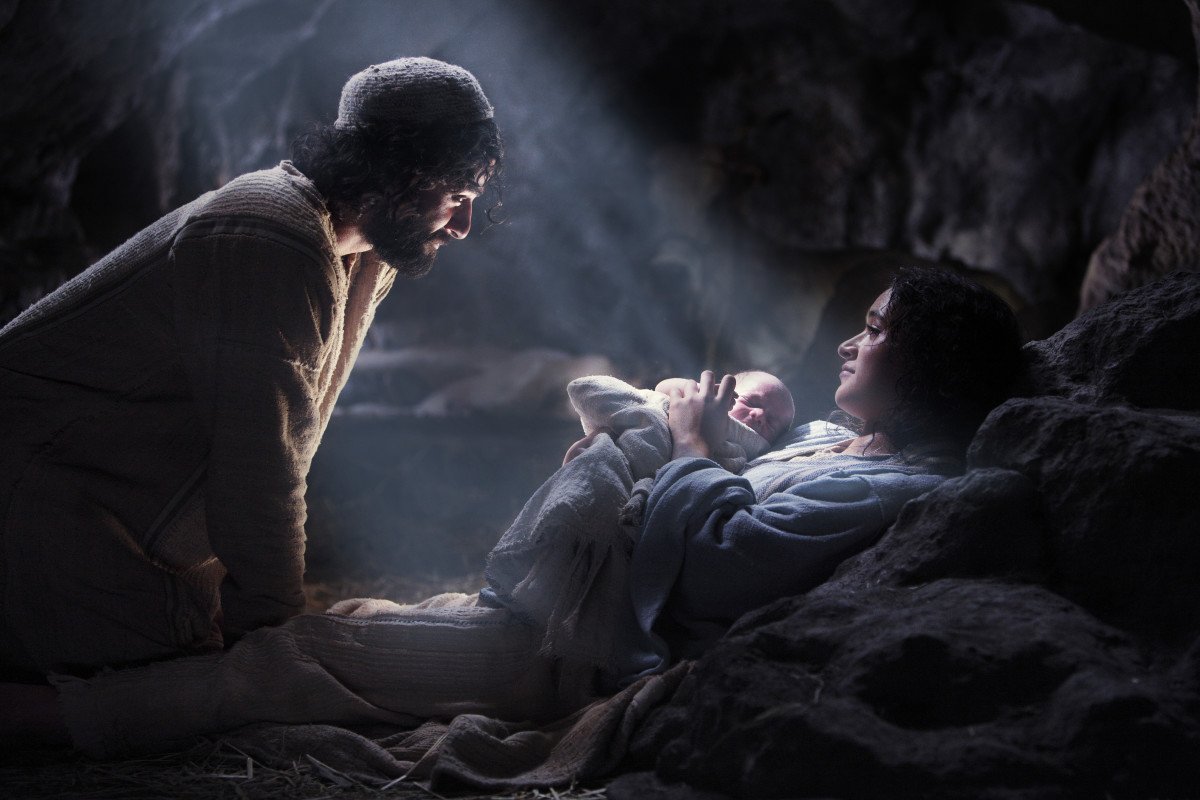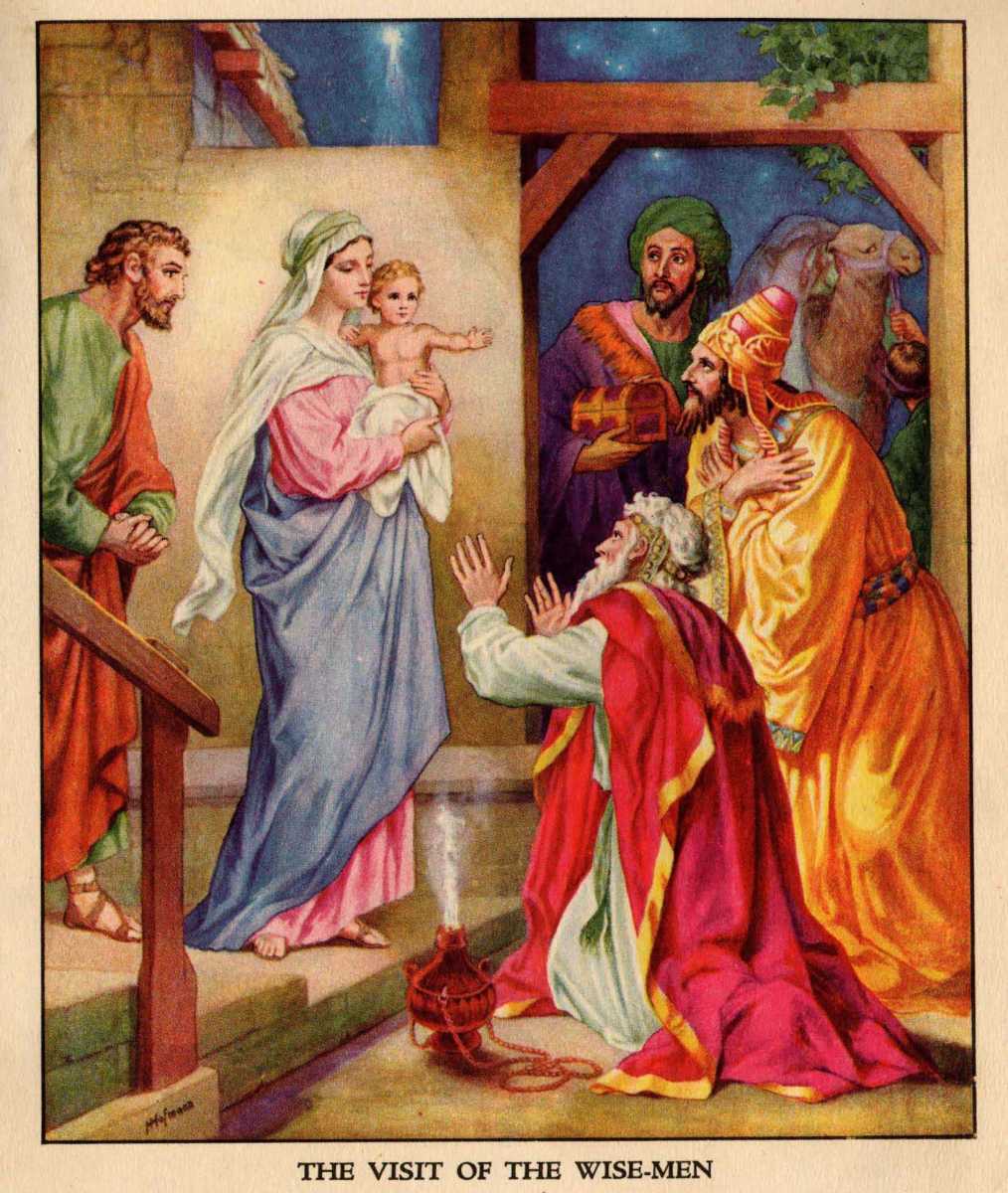Which Christmas Story Should We Believe?

Books Related to Topic
How Biblical is the Classic Nativity Scene?
When I was growing up, one of my favorite family traditions was the "tree trimming party" when we got to put up all of the Christmas decorations. An important part of this tradition was setting up the manger scene. Most Americans, Christians or not, are familiar with this basic scene. The baby Jesus is lying in some sort of a makeshift cradle with Mary and Joseph at his side. Surrounding the happy family are a few barnyard animals, three wise men bearing gifts, and at least one shepherd and angelic figure. And on top of the manger, some sort of a star often shines overhead.
What I did not realize at the time is that this particular scene appears nowhere in the Bible. Some of the elements are pure conjecture. The Bible does not say anything about barnyard animals, and nowhere does it say that there were exactly three wise men. But even the parts of the scene that appear in scripture are a forced amalgamation of two distinct, often contradictory stories.
The two scriptural Christmas stories appear in the gospels of Matthew and Luke. Mark and John don't include any details about the birth of Jesus. But because the stories in Matthew and Luke are often ripped out of context and blended together, most people do not notice how different the two versions really are. And these differences go beyond factual details. Instead, each distinct Christmas story is consistent with the distinct, overriding themes emphasized by each of the gospel writers. Matthew and Luke were not simply telling stories from different points of view that emphasized different details. Instead, they are describing a somewhat different Jesus designed to appeal to different audiences.
The Christmas story in the gospel of Matthew emphasizes the role of Joseph. After being betrothed to Mary, Joseph finds out that she is pregnant. The problem, however, is that they have not had sexual relations yet. So as an honorable man should, Joseph decides to quietly divorce Mary. But an angel then appears to him in a dream and tells him that the Holy Spirit conceived the child, and he should neither divorce her nor have sex with her until the child is born. Jesus is then born in their hometown of Bethlehem. Shortly afterwards, some (unspecified number of) wise men arrive from the East, having followed some sort of a star to this location. They then ask King Herod where they might find the newborn king of the Jews so that they might worship him.
This question makes Herod nervous, so he finds out from the Jewish scribes where the future messiah was supposed to be born. When he finds out that the Christ is supposed to be born in Bethlehem, King Herod asks the wise men to go there, find this child, and report back to him so that he might also go and worship this newborn king. The wise men then find the baby Jesus in a house - not a manger - underneath the star they had so diligently followed. They then give thanks, fall down and worship the child, and shower him with gifts. But upon leaving, they are warned in a dream to not report back to Herod, so they go home following another route.
Joseph is then visited once again by an angel in a dream. This time, Joseph is told to escape with his family to Egypt because King Herod is going to try and kill his newborn child. Joseph then follows these instructions, and shortly after his escape, King Herod finds out that the wise men were not going to report back to him as instructed. Herod then flies into a rage, and he decides to kill all the male children in Bethlehem who were two years of age and younger. Fortunately, Joseph and family are safe in Egypt, and upon Herod's death, the angel once again appears to Joseph in a dream and tells him that he could safely return home. But after receiving yet another dream, Joseph decides that it would be safer to settle in Galilee than in his hometown of Bethlehem, so he and his family settle down in the remote town of Nazareth.
So in this particular story, we find the wise men and the miraculous star that had the amazing capacity to settle over a specific house. We do not find, however, the manger and the shepherds. Mary is also an insignificant figure in this story, with no descriptions of any of her specific words or actions. It merely says that she miraculously became pregnant, gave birth to a son, was in the house when the wise men came, and traveled along with Joseph when he received instructions in his various dreams.
In the Christmas story found in the gospel of Luke, however, Mary is the central character. It starts by going into some detail describing the miraculous conception of her soon to be born child. An angel appears to her to and says that she will give birth to a son who she will name Jesus, and he will be the long promised Messiah. After asking how it was possible that a virgin such as herself could be pregnant, Mary accepts the angel's message and submits herself to the will of God. (This story is interspersed with the story of the miraculous birth of John the Baptist, whose mother Elizabeth was Mary's cousin.)
Shortly before Jesus was born, the Roman emperor declares that a census would be taken of his empire, so Joseph, who was in the lineage of David, travels from their home village of Nazareth and goes to David's old hometown: Bethlehem. Jesus is then born in Bethlehem in a manger because there was no room at the inn. An angel then appears to some local shepherds and tells them that the Messiah had been born in a manger, and they then rush to see this child, telling Jesus' parents about the angel's appearance. The new family then stays in Bethlehem until the child is circumcised, and at the prescribed time, travels to Jerusalem to perform the purification rituals prescribed by Jewish law. While there, a devout man and a woman, inspired by the Holy Spirit, come to see the child and praise God that the savior of Israel had been born.
Clearly, there are some basic ways that these stories contradict one another. First of all, the two writers came up with different ways of explaining how a man from Nazareth came to be born in Bethlehem. According to Matthew, Bethlehem was the original hometown of Jesus' family, but they initially left this town to escape the wrath of Herod, and they settled in Nazareth after returning from exile in order to play it safe. In Luke, the family was living in Nazareth, and they only visited Bethlehem, where Jesus was ultimately born, in order to fulfill the requirements of a census. Luke's version also gives no indication that Jesus and his family were ever in danger. Rather than quickly escaping into exile, the family spends significant time in Bethlehem and Jerusalem in order to perform the various rituals required by Jewish law. They then peacefully return home to Nazareth without taking any detours into Egypt. In Luke, there is also no mention of any wise men, and instead of revealing Jesus' birth to eastern royalty through the appearance of a miraculous star, an angel gives the news to lowly shepherds working in the fields.
For a Christian fundamentalist who views all scripture as the literal, inerrant word of God, these contradictions pose some serious problems. So if they are going to insist that both are factually correct, then they must engage in some serious intellectual gymnastics. But if they want to save themselves the trouble, they can fall back on the standard "it's a mystery" argument and/or view these "apparent" contradictions as a test of their faith. The truly faithful, after all, will accept scripture as absolute truth no matter what human evidence or reason might say. What right does any human have, with his or her inherent limitations, to question the word of God?
But for Christians who view the gospels more as pieces of literature than as history textbooks, these contradictions do not pose such a grave problem. Literature, after all, is more about communicating truths than facts. And if the gospels of Matthew and Luke are read in their entirety, as I imagine the authors originally intended, the differences between these Christmas stories start to make sense, and the beauty of the literature becomes more apparent.
The book of Matthew, when read as a whole, clearly targets a Jewish audience, as can be seen with its account of the birth of Jesus. This story emphasizes that Jesus is a king in the line of David, the messiah promised by the ancient scriptures. Royal, wise men follow his star in order to worship him, and King Herod is so terrified and enraged by this child's birth that he resorts to drastic, violent actions in order to destroy him. On five occasions in his Christmas story, Matthew makes references to Old Testament prophesies fulfilled by Jesus. In addition, his story has clear parallels to some of the major events of Jewish history. A man named Joseph receives messages in dreams, just as his namesake, one of the sons of Jacob, once interpreted dreams for the pharaoh of Egypt. Jesus and his family go into exile in Egypt and eventually return, just as Moses led his people out of Egypt during the Exodus. At the time of Jesus' birth, Jewish children are being slaughtered under orders by the king, reminding Jewish readers of the killing of Hebrew children at the time of Moses' birth.
Luke, on the other hand, emphasized that Jesus had come to save the poor and the lowly, the people not highly regarded by mainstream society. He is not only the promised savior of the Jews. He has also come to bring salvation to the gentiles, who seem to be Luke's target audience. Instead of focusing on the role played by Joseph in this patriarchal society, Luke instead chooses to describe the faithfulness of Mary, who, by nature as a woman, is a person of lower status. Instead of being born in his home and lavished with gifts by foreign dignitaries, Jesus is wrapped in swaddling clothes and placed in a manger. When the angel appears to share the news of the savior's birth, shepherds are the first to get the news. And while Matthew has Jesus being born in his parents' native town of Bethlehem, the city of David, and eventually settling in the remote village of Nazareth, Luke traces the origins of Jesus' family to Nazareth, claiming that Jesus was only born in Bethlehem because his family was visiting there due to a Roman census. From the beginning, the Son of God was living the life of the humble, low class, servants whom he had come to save.
Amazingly, in spite of all of the attention that Christmas gets in the United States each year, many Americans are unaware of these fundamental differences between the two versions of the nativity story. Most are also unaware of the differences, both in terms of themes and factual details, between the gospels in general. This is partly because many Americans, including large numbers of self-professed Christians, never read much of the Bible. And when they do, many get their scripture in small doses of either individual verses or short passages. The advantage is that this saves people the trouble of facing up to some of the clear contradictions between different versions of the same events. It also, however, stops people from seeing the sophistication and the beauty of the literature, some of which has helped form the basic foundations of western civilization.
You could make the case, however, that Christian fundamentalism is not necessarily a bad thing. It can form a foundation of faith that helps people cope with the difficulties of life and can lead them to behave with greater compassion, moral integrity, and love. And as a Unitarian Universalist, I am theologically obligated to say that a religion's impact on an individual's behavior is the only thing that really matters. But still, on some level, I can't help thinking that a stubborn insistence on Biblical literalism can have a negative spillover effect on various aspects of a person's life, stifling their ability to evolve as a human being.
But what do I know. I have no idea what exactly happened when Jesus was born. But if I had to choose between the two Biblical Christmas stories, I would go with Luke's version over Matthew's. As a fan of the underdog, I am a sucker for stories that favor the "little guy." So if I felt compelled to create a Biblically accurate Christmas scene, I would keep the manger, shepherds (and maybe even the barnyard animals) and lose the three wise men and the shining star. But for now, the little nativity scene in our house includes all of the elements of both stories. It is, after all, tradition, and there is something to be said for tradition.







